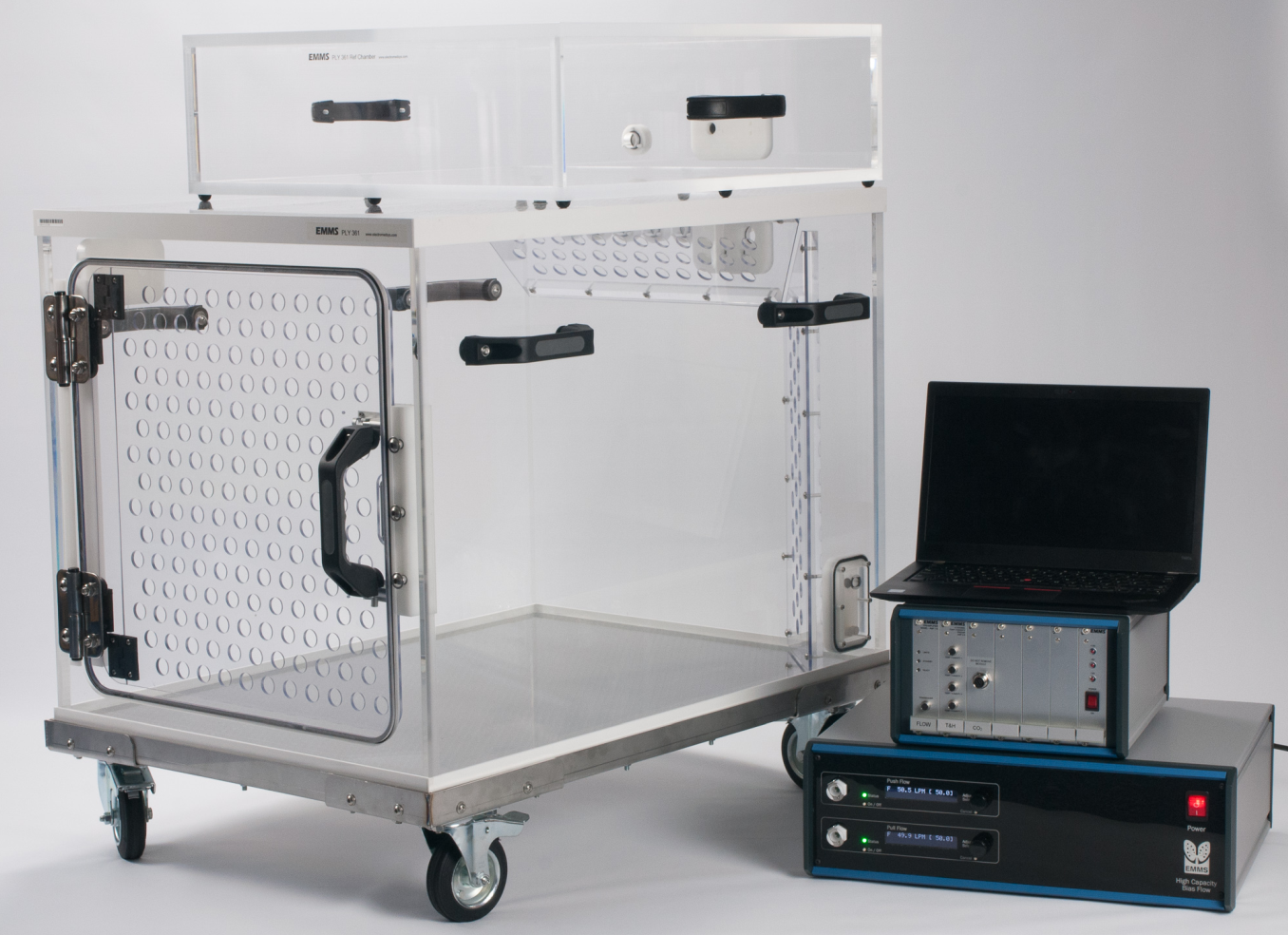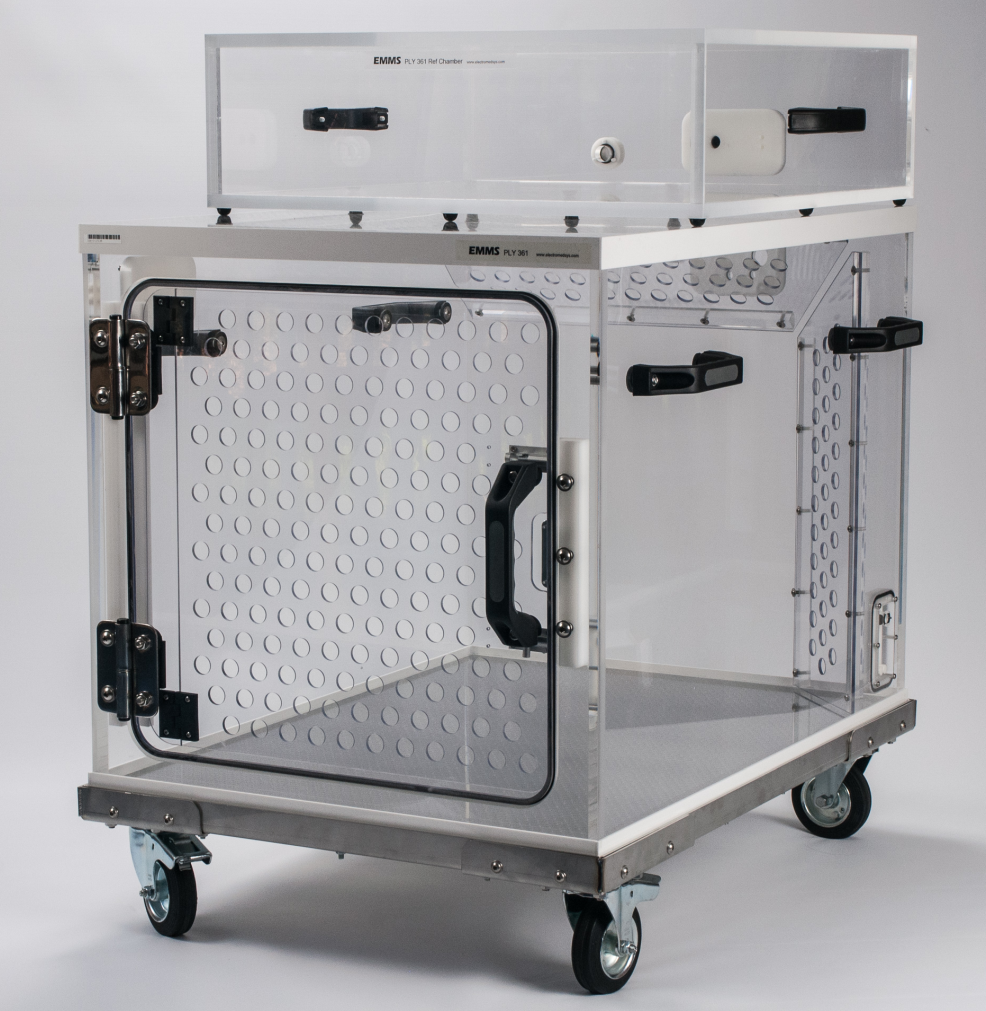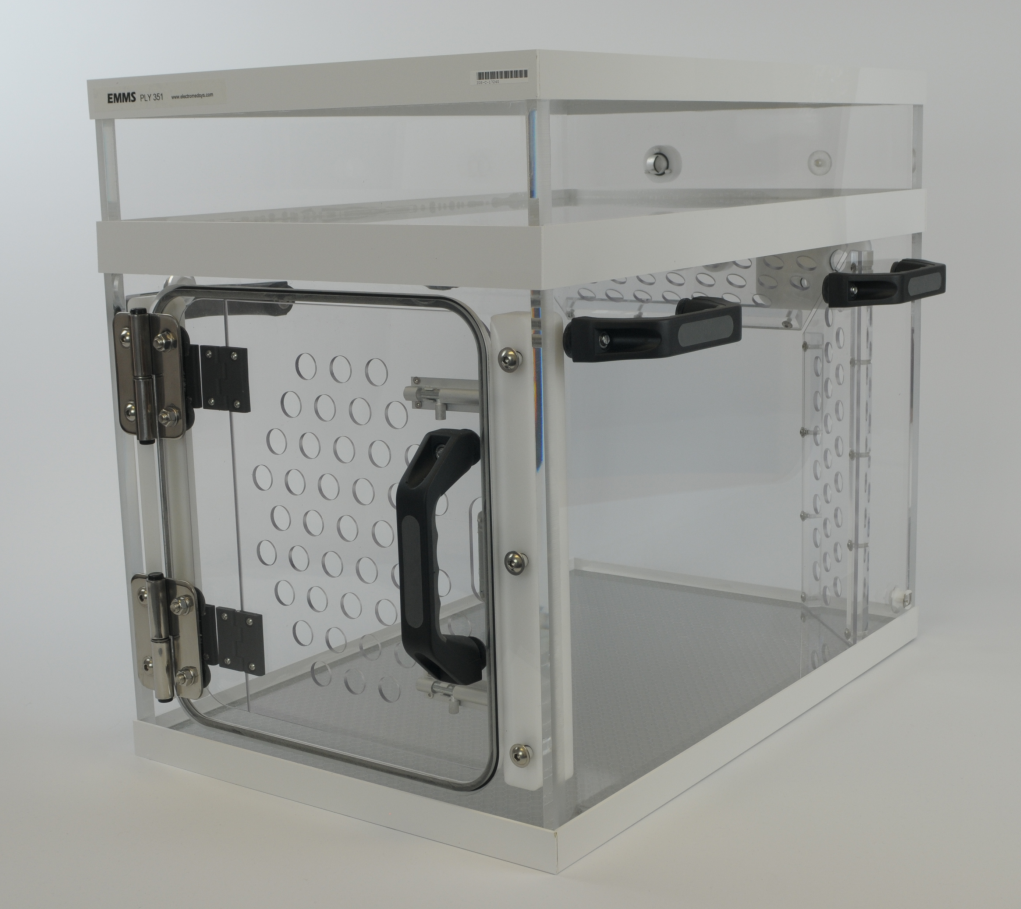Description
The EMMS Whole Body Plethysmography (WBP) system for large animals is a complete unrestrained setup designed to work both in veterinary and research environments. It is typically used with dogs and cats, and several sizes of plethysmographs are available to accommodate different breeds and species. A common application is to quantify Brachycephalic Obstructive Airway Syndrome (BOAS) in dog breeds such as bulldogs, pugs, and French bulldogs.

Advantages
Automated calculation of BOAS index.
Automated calibration.
Completely unrestrained and non-invasive.
Push and pull bias flow air supplies are controlled automaticallly to achieve near zero flow through the pneumotachographs. This allows the system to work in all environments.
Temperature, humidity, and CO2 measurement for welfare monitoring
System records video and audio which is synchronized with the respiratory signals. Includes synchronized replay facility for data review.
Large chambers include stainless steel trolley with wheels for easy transportation around the work area.
Applications
Whole Body Plethysmography is a very versatile system that can be used for different applications, such as BOAS (Brachycephalic Obstructive Airway Syndrome), Apnea, Asthma and hypoxia.
There are different software analysers available for this type of system, and different parameters are available for each. The following lists are not exhaustive and show some of the parameters available:
| Name | Units | Description |
|---|---|---|
| BOAS Index | (none) | Index calculated |
| Name | Units | Description |
|---|---|---|
| TV | ml | Tidal Volume, volume inspired during one breath |
| tI | s | Inspiration time |
| tE | s | Expiration time |
| PIf | mls/s | Peak inspiratory flow |
| PEf | mls/s | Peak expiratory flow |
| f | breaths/minute | Frequency of breathing |
| MV | ml | Minute Volume, volume inspired in one minute |
| tR | s | Relaxation time |
| TB | % | Duration of breaking. Percentage of the breath occupied by transitioning from inspiration to expiration |
| TP | % | Duration of pause before inspiration. Percentage of the breath occupied by transition from expiration to inspiration |
| AV | ml | Accumulated volume |
| EIP | s | End inspiratory pause |
| EEP | s | End expiratory pause |
| Penh | (NONE) | Pause enhanced, index of constriction |
| VolBal | % | Difference between inspiratory/expiratory volume |
| Atm | mbar | Atmospheric pressure |
| Hum | % | Relative humidity in chamber |
| Temp | deg. C | Air temperature in chamber |
| BTemp | deg. C | Body temperature of animal |
| Corr | N/A | Drorbaugh & Fenn volume correction constant |
| NTemp | deg. C | Nasal temperature |
| AtoB | N/A | Epstein & Epstein A/B ratio |
| Name | Units | Description |
|---|---|---|
| NSigh | count | Number of sigh detected |
| PSigh | % | Percentage of time spent in sigh |
| PSniff | % | Percentage of time spent sniffing |
| NApnea | count | Total number of apneas (any type) |
| PApnea | % | Percentage of time spent in apnea (any type) |
| TApnea | s | Average duration of apneas |
| N0Apnea | count | Total number of Type 0 Apneas |
| P0Apnea | % | Percentage of time in Apnea Type 0 |
| N1Apnea | count | Total number of Type 1 Apneas |
| P1Apnea | % | Percentage of time in Apnea Type 1 |
| N2Apnea | count | Total number of Type 2 Apneas |
| P2Apnea | % | Percentage of time in Apnea Type 2 |
| Pnormal | % | Percentage of time spent breathing regularly |
Specifications
The table below shows the standard chamber sizes. For other customized sizes, please contact us.
| References | Species | Size Guidance |
|---|---|---|
| PLY 351 | Car or small Dog | <15Kg |
| PLY 361 | Dog | 15-30Kg |
| PLY 371 | Large Dog | >30Kg |
Images
Selected References
Characterisation of Brachycephalic Obstructive Airway Syndrome in French Bulldogs Using Whole-Body Barometric Plethysmography
Nai-Chieh Liu, David R. Sargan, Vicki J. Adams, Jane F. Ladlow
Whole-Body Barometric Plethysmography Characterizes Upper Airway Obstruction in 3 Brachycephalic Breeds of Dogs
N-C. Liu, V.J. Adams, L. Kalmar, J.F. Ladlow, and D.R. Sargan





